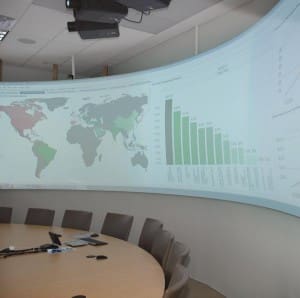Leading pharmaceutical and biotech companies must continue to adapt to increasing global competition, regulation, and pricing pressures. In response, the pharmaceutical industry is undergoing a major value chain transformation.
Time to market continues to be crucial. Developing processes that can be up and running quickly, enable fast changeovers, and reformulation as needed, can make the difference between success and failure in this fast-paced market.
Contract manufacturing can provide an effective approach to get production running quickly. The pharmaceutical industry has witnessed a shift from a vertically integrated business model to a network of suppliers. Contract manufacturing has evolved as one of the integral components of the pharmaceutical supply chain. The current marketplace has numerous established and emerging companies that can manufacture new products, offering a diverse collection of services. The scale of operation varies from manufacturing for clinical trials to full production. Contract manufacturing includes active pharmaceutical ingredient and finished dosage forms manufacturing. Contract manufacturing can also encompass packaging.
Another trend is the emergence of single-use disposable manufacturing. It is easy to imagine single use for filters or tubing systems but, today, even buffer containers and bioreactors are single use. Entire disposable facilities are also possible today at a fraction of the cost of traditional stainless steel manufacturing facilities. Manufacturing production that has to be up and running quickly, such as for a vaccine for a pandemic, often uses disposables.
China, India and other countries are rapidly developing domestic pharmaceutical, biopharmaceutical, and generic drug industries. Due to increasing cost pressure and increased local demand, global pharmaceutical companies are locating production to emerging markets.
Pharmaceutical regulations require validation of drug production. Documented evidence of quality production is essential. Quality must be built into the process. In the US, the FDA’s 21-CFR-Part 11 specifies that the documentation can be provided electronically with unique electronic signatures.
But pharmaceutical manufacturers must also comply with global regulations designed to reduce the risk of counterfeiting or poor quality medicines. Each country has its own regulations and requirements for anti-counterfeiting, track and trace, and data storage. This can be challenging for global drug makers. As countries adapt regulations for securing the supply chain, manufacturers must not wait, they must implement their programs preemptively. But they should work with newer solutions that are flexible and can adapt easily to changing regulations.
The supply chain requires mechanisms for collaborating with manufacturers, wholesalers, re-packers, distributors, pharmacies, and other trading partners. Companies need ways to share information and intelligence to improve efficiencies, ensure product integrity, and foster smarter problem solving. This is not just about knowing where a shipment is today, but about tracking the shipment’s location and movement, managing inventory, maintaining product quality, managing the distribution, and product visibility. Enabling the appropriate degree of synergy between supply chain partners is leading to interest in a new generation of sensor driven, Internet of Things (IoT) enabled supply chain control towers.

Global Control Tower
In particular, the next gen supply chain control towers are demonstrating greater effectiveness at balancing supply and demand with more agility; reacting intelligently and quickly to major supply chain disruptions (counterfeits, recalls, earthquakes, tsunamis, and so on); and improving business continuity and supply chain risk management programs.
These next generation control towers require visibility across a multi-tier supply chain; from the source of a product’s ingredients through the product’s manufacture, storage, transit, sale, and distribution. In addition to the sheer volume of imports and global manufacturing facilities, there has been an increase in the variety of sources, shippers, methods of transportation, and supply chain complexity for products. Combined, these factors challenge the industry to ensure that all drugs and drug components are of high quality and travel safely throughout their complex supply chains.
But the new IoT enabled control towers come with their own set of challenges.
While IoT initiatives promise significant benefits, without appropriate data management and analysis tools, the increasing volume of data generated by IoT-connected devices, equipment, and applications can overload people with data, making it difficult to identify and respond to actionable events.
And by itself, a control tower does not address the tremendous global counterfeiting problem that exists. One of the best ways to prevent, detect, and respond to threats of counterfeit and recalls for substandard drugs is through an automated track-and-trace system. To help keep track of the millions of medications, the pharmaceutical industry supports the development of track-and-trace systems. The electronic pedigree (ePedigree) includes an electronic record on the drug’s strength, expiration date, lot number, serial number and transaction and source information (from manufacturer to wholesales, distributors and pharmacy). Resolving the global counterfeit drug problem requires common practices and a standards-based infrastructure that includes participation and collaboration by all trading partners across the supply chain.
Earlier this year, ARC published a global study on the Supply Chain Visibility and Collaboration market. In this fast growing market, the fastest growing of all supply chain solution markets, the pharmaceutical and biotech industry is projected to be the fastest growing of all industrial verticals in this software market.

















Leave a Reply